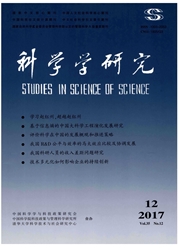

 中文摘要:
中文摘要:
在气候保护和经济危机并存的背景下,减排二氧化碳不能刺激经济危机。研究了研发投资实现知识积累以及提高能效、替代实物能源投入的作用。进而将经济增长理论与最优控制模型结合,模拟分析了我国在给定排放配额的情况下,如何通过研发投入控制碳排放路径,实现经济的最优平稳增长和气候保护两重目标。研究发现:减排措施实施不宜太早或太晚,前期研发投资可以适当下调;然后逐渐提高研发投资强度,促进能源效率提高,替代部分实物能源投入;在知识积累和能源效率提高到一定水平后,研发投资可以再次回落至较低水平。在控制大气二氧化碳难度不超过450ppm目标下,我国需从2016年开始采取有效减排措施,不断提高研发投资比重。相应地,经济增长路径显示未来我国的经济还将继续保持增长态势,但在严厉减排目标下经济增速略低;碳排放在早期还将继续较快增长,随着减排投资的有效实施,增速逐渐放缓;排放强度早期没有出现显著下降,自有效减排投资实施以后,下降趋势明显。
 英文摘要:
英文摘要:
It is well accepted that climate mitigation should not stimulate economic crisis thanks to the 2008 global financial crisis.Under this context,we studied the effect of research and development(RD) investment on the knowledge accumulation,energy efficiency improvement,and substituting for some physical energy input.Moreover,this paper combined the economic growth theory with the optimal control model,to simulate the trajectory for RD investment under the double objectives of climate mitigation and optimal balanced economic growth.The simulation indicated that the RD investment,which is an effective way to improve the energy efficiency,would see a slight drop-down for the inceptive period,and aggressively rise to a relative high level then drop again afterward.Under the 450 ppm carbon concentration target,the RD investment ratio in GDP would have to increase significantly from 2016,much stringent compared to other less rigorous targets as 500 ppm.The economic would maintain its growth trend,though less rapid as that under rigorous targets.Before the enforcement of effective RD investment,the carbon emission would increase rapidly and the carbon intensity of GDP would not see a significant decrease.While after the enforcement,the speed of carbon emission would slow down and the carbon emission would start to drop evidently.
 同期刊论文项目
同期刊论文项目
 同项目期刊论文
同项目期刊论文
 An Optimal Balanced Economic Growth and Abatement Pathway for China under the Carbon Emissions Budge
An Optimal Balanced Economic Growth and Abatement Pathway for China under the Carbon Emissions Budge Carbon emissions trends with optimal balanced economic growth of China and the USA and some abatemen
Carbon emissions trends with optimal balanced economic growth of China and the USA and some abatemen 期刊信息
期刊信息
